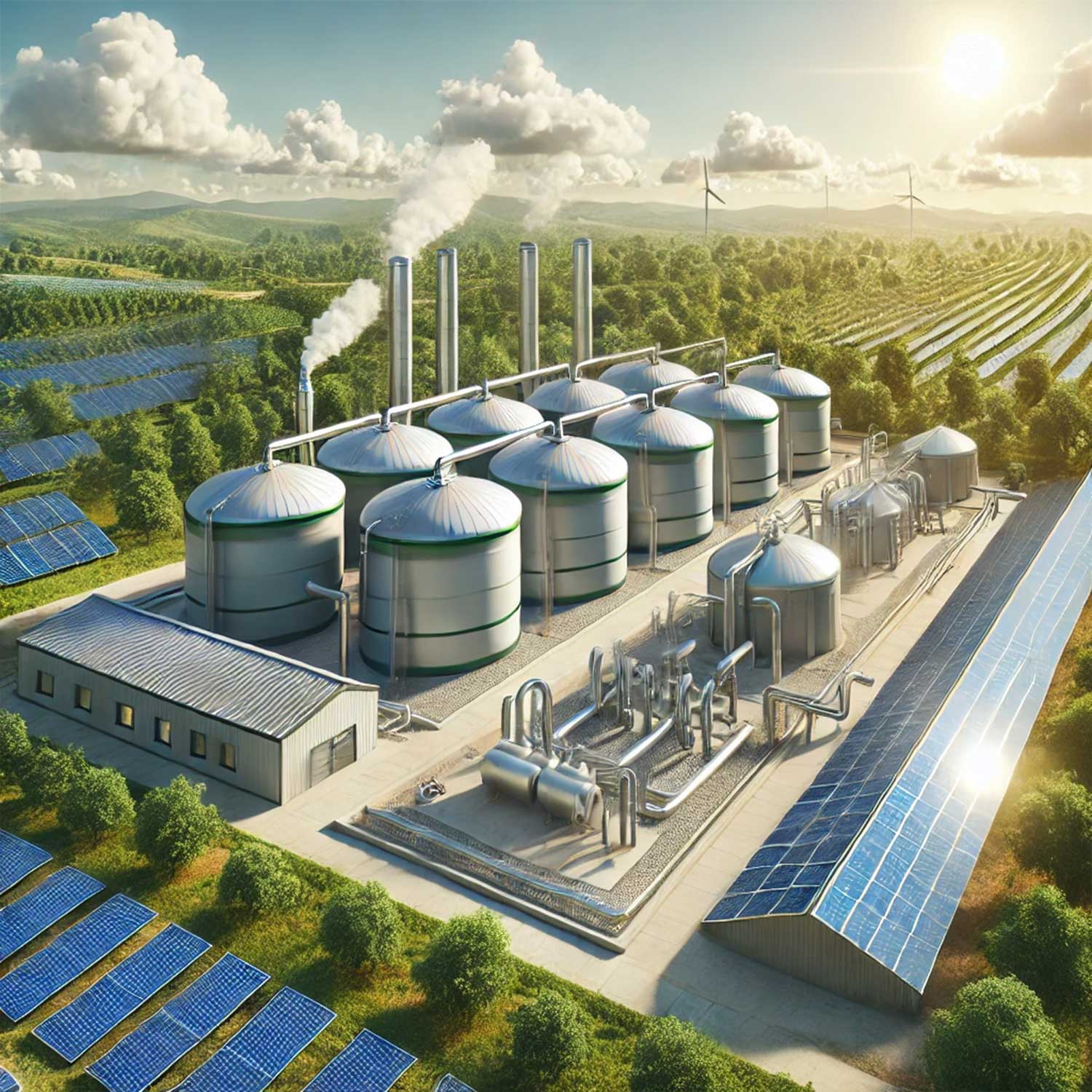
Methanization stands as a central technology in the energy transition, transforming organic waste into biogas and valuable digestates. This biological process, driven by microorganisms in the absence of oxygen, produces renewable energy that can be used directly as biogas or refined into biomethane, a sustainable alternative to fossil natural gas. A crucial element in this process is iron hydroxide, which plays a key role in purifying biogas to make it usable and compliant with standards.
Here are the key steps of methanization, from raw material collection to the transformation of biogas into biomethane.
Step 1: Collecting and preparing organic materials
Methanization begins with the collection of suitable organic materials from various sources:
- Agricultural waste: Livestock effluents, crop residues.
- Food waste: Kitchen scraps, industrial or household biowaste.
- Sewage sludge: Organic waste from wastewater treatment.
- Green waste: Grass clippings, dead leaves.
These materials undergo pretreatment, often mechanical, to homogenize them and remove unwanted elements (plastics, metals). Once prepared, they are fed into anaerobic digesters.
Step 2: Anaerobic digestion
Inside the digesters, microorganisms break down organic matter in the absence of oxygen. This biological process occurs in several stages:
- Hydrolysis: Complex polymers (carbohydrates, lipids, proteins) are broken down into simpler molecules.
- Acidogenesis: Simple molecules are converted into volatile fatty acids, alcohols, CO₂, and H₂.
- Acetogenesis: Fatty acids are transformed into acetic acid, hydrogen, and carbon dioxide.
- Methanogenesis: Methanogens convert acetic acid and carbon dioxide into methane.
The end product of digestion is a gaseous mixture called biogas, primarily composed of methane (CH₄) and carbon dioxide (CO₂), along with traces of contaminants like hydrogen sulfide (H₂S) and siloxanes.
Step 3: Biogas purification
Raw biogas from digesters contains impurities that must be removed to make it usable. This is where iron hydroxide plays a crucial role.
Why purify biogas?
Impurities in biogas, such as H₂S, present several challenges:
- Toxicity: H₂S is corrosive and can damage equipment.
- Pollution: Traces of volatile organic compounds degrade air quality.
- Regulatory compliance: Biogas injected into natural gas networks must meet strict purity standards.
Iron hydroxide: An effective solution
Iron hydroxide is widely used to remove H₂S from biogas through a chemical reaction that converts the gas into solid iron sulfide (FeS). This purification step is essential for:
- Protecting equipment: By reducing corrosion, infrastructure such as engines, turbines, and pipelines lasts longer.
- Improving gas quality: Purified biogas can be used for more demanding applications, such as injection into natural gas networks.
FERHYDROX, a product offered by CMMP, is a high-performance solution tailored to this type of treatment, ensuring efficient purification and easy application in various industrial contexts.
Step 4: Transforming biogas into biomethane
Once purified, biogas can be used as-is to produce electricity or heat through cogeneration. However, to be injected into natural gas networks or used as fuel, it must undergo an additional refining process to become biomethane.
Refining processes
Several technologies are used to separate methane from other components:
- Membrane purification: This technology separates CH₄ and CO₂ using semi-permeable membranes.
- Chemical absorption: CO₂ is captured using specific chemical solutions.
- Cryogenics: This method cools biogas to isolate methane in liquid form.
Final quality
The resulting biomethane is chemically equivalent to fossil natural gas. It can be:
- Injected into distribution networks: As a direct replacement for natural gas.
- Converted into bioNGV (Natural Gas for Vehicles): A sustainable alternative for transportation.
Step 5: Valorizing digestates
Alongside biogas production, methanization generates digestates—solid or liquid residues rich in nutrients. These digestates are used as natural fertilizers in agriculture, effectively replacing chemical fertilizers.
Advantages of digestates:
- Nutrient-rich: Contain essential elements like nitrogen, phosphorus, and potassium for soils.
- Reduced environmental impact: By avoiding synthetic fertilizers, methanization limits soil and groundwater pollution.
- Closing the circular economy loop: Agricultural waste is valorized in a virtuous cycle, enhancing the sustainability of operations.
Conclusion : From biogas to biomethane: key steps of methanization explained
The transition from raw biogas to biomethane is a multi-step process demonstrating methanization’s potential to transform waste into valuable resources. The collection of organic materials, anaerobic digestion, purification with products like iron hydroxide, and refinement into biomethane illustrate how this technology contributes to a sustainable energy transition.
Innovations such as FERHYDROX from CMMP optimize the performance of facilities, ensuring higher biogas quality and increased equipment durability. Methanization thus emerges as a vital solution to address the environmental, energy, and economic challenges of our time.
CMMP Company
CMMP, a specialist in mineral materials since 1932, offers FERHYDROX, a high-quality iron hydroxide designed for methanization. This efficient product ensures optimal performance in capturing H2S, thereby contributing to sustainable and environmentally friendly industrial solutions.
Share this article
WHAT IS METHANIZATION?
IRON HYDROXIDE FOR METHANIZATION
This blog provides information on the valorization of organic waste, its transformation into renewable energy (biogas), and natural fertilizers. It highlights the crucial role of iron hydroxide in optimizing performance and purifying biogas.
